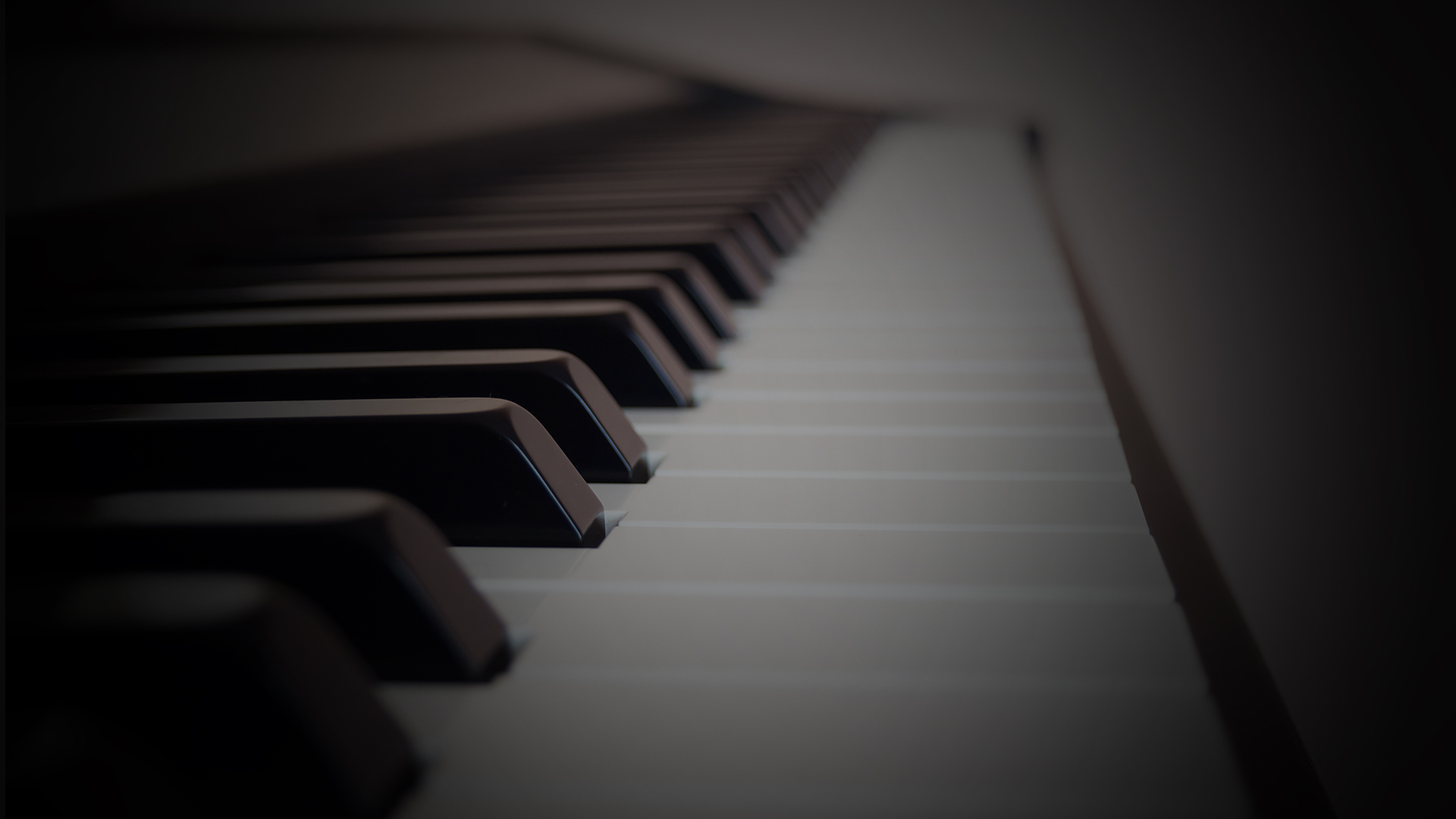6 Steps to Play Piano Like George Winston
Learning Focus
Music Style
Free Lessons
Get free weekly lessons, practice tips, and downloadable resources to your inbox!
The music of American composer and pianist George Winston is treasured for its simplistic beauty, soaring melodies and gorgeous chords. In today’s Quick Tip, 6 Steps to Play Piano Like George Winston, John Proulx shares how you can capture the essence of the late composer’s popular contemporary piano sound in your own playing! You’ll learn:
If you enjoy playing and listening to solo contemporary piano music, then you’ll love today’s lesson!
Introduction
Whether for mindfulness and meditation or for relaxation and relief, listeners often turn to solo acoustic piano music for the peaceful mood that it evokes. In the 1980s, contemporary instrumental music gained massive popularity as record companies began marketing “new age” music as a mainstream genre. At the forefront of this modern musical frontier was pianist and composer George Winston, who also helped to define its sound.
In today’s lesson, piano students of all levels will be able to enjoy playing new age music in the piano style of George Winston. In fact, you can download the lesson sheet PDF from the bottom of this page after logging in with your membership. You can also easily transpose this lesson to any key using our Smart Sheet Music.
In the next section, you’ll learn more about George Winston and his music. To jump straight to the lesson material, click here.
George Winston (1949–2023) was born in Hart, Michigan, but he spent most of his childhood in Montana, Mississippi and Florida. Winston grew up on instrumental rock and R&B artists like the Ventures, Booker T & the MG’s, Floyd Cramer and Jimmy Smith. As a teenager, he also fell in love with the jazz piano music of Vince Guaraldi. Yet, it was the music of the Doors that prompted Winston to begin playing the organ as a teenager. In his early twenties, Winston switched his primary instrument to piano after discovering a love for 1920s and 30s jazz pianists like Fats Waller and Teddy Wilson.¹
While still in his early twenties, George Winston recorded his first solo piano album on the Takoma label in 1973 entitled Piano Solos (subsequently re-released in 1981 as Ballads and Blues 1972.) During this time, Winston also developed and refined his own style of solo acoustic piano composition which he described as “folk piano.”
George Winston’s popularity as a solo instrumental artist came after he sent a demo tape to Will Ackerman of Windham Hills Records in 1979.² As a result, Windham Hills agreed to produce Winston’s next solo album, Autumn (1980), which quickly become the label’s bestselling album.³ By 1985, Autumn and Winston’s two follow-up albums—Winter Into Spring (1982) and December (1982)—all achieved platinum status for having sold over 1 million units.⁴ In addition, Winston won the 1996 Grammy Award for Best New Age Album for Forest (1994).⁵
In all, George Winston’s sixteen solo piano albums have sold over 15 million copies. Even though George Winston passed away in 2023 after a 10-year-long battle with cancer, his musical legacy continues to inspire countless contemporary listeners and piano students.
Characteristics of George Winston’s Piano Style
George Winston never used the classification “new age” to describe his music. Instead, he thought of his music as “folk piano” or even “rural folk piano.” As such, many of his albums evoke imagery of landscapes and seasons. Musically speaking, Winston’s picturesque compositions are characterized by slow to moderate tempos and introspective harmonies with subtle use of dissonance. Winston’s melodies usually draw on major, minor or pentatonic scales and are pensive and motific in nature.
🔎 Check out John Proulx’s Soundscapes educational book of soothing original piano pieces with a forward by George Winston himself.
George Winston Style Chord Progression
Throughout this lesson, we’ll explore George Winston’s meditative piano style using the chord progression from his popular 1982 song entitled “Thanksgiving.” This progression is in the key of E minor and is comprised of six measures in all, with each chord lasting for one measure. Upon this progression, Winston introduces an initial stark melody which he then develops in subsequent repetitions with increasing creativity and energy, but stopping short of becoming aggressive.
George Winston
“Thanksgiving” (1982)
The example below demonstrates how to play this chord progression on piano with basic triads. Notice that in measures 1–5, the essential root movement is continually downward by the interval of a perfect 5th. This can be difficult to see at first glance because of octave displacement, which is used to keep all the chords in the same register. Nonetheless, the root movement E→A→D→G→C constitutes counterclockwise movement around the circle of 5ths. Therefore, we call this a cycle of fifths chord progression. In measure 6, the B major chord breaks the cycle and prepares the progression to repeat again from E minor.

In the next section, we’ll use this simple chord progression as a musical canvas for exploring the piano style of George Winston.
Play Piano Like George Winston in 6 Steps
If you enjoy George Winston’s solo piano compositions, we have great news for you. Playing new age piano music is not all that difficult! Rather than demanding a highly-refined piano technique from the performer, the captivating beauty of new age piano music comes from elegantly appropriating the timbral qualities of the instrument itself. As a result, new age piano music is accessible to piano students of all ability levels.
Step 1: Explore Piano Registers
The first step to play piano like George Winston is to explore the full range of the instrument. This is especially true of the upper register. For example, George Winston’s magical arrangement of “Carol of the Bells” makes extensive use of the upper range of the piano throughout. By comparison, “Night (Part 1: Snow)” is orchestrated in three distinct zones and features a mid-range ostinato with upper-register melodic fragments that are punctuated by open octaves in the lower register.
For Step 1, let’s begin exploring the new age compositional style of George Winston by playing a representative minimalistic melody in the upper register of the piano over our cycle of fifths chord progression in E minor.

Step 2: Harmonize Melody
One common way in which George Winston frequently developed his piano melodies was to harmonize them primarily in 3rds. Therefore, in Step 2, we’ve added the next closest chord tone below each melody note. In most cases, this winds up being a 3rd below the melody. However, if the melody note is the root, then the next closest chord tone is down a 4th interval.

Step 3: Use Open Space
Another important compositional element of new age piano music involves the use of open spaces. Harmonically speaking, this often means playing open 5ths or octaves because these perfect intervals create rich harmonic overtones that are not overly dense. In addition, the use of open space also pertains to the rhythmic density of the composition. George Winston’s piano music often leaves plenty of breathing room amidst its sonic imagery.
In Step 3 below, we demonstrate our cycle of fifths progression in E minor with open 5th intervals. These drone-like intervals in the left hand create the perfect sonic bed for melodic exploration with the right hand in the upper register.

Step 4: Add Left-Hand Accompaniment Pattern
The fourth step to play piano like George Winston is to add a sparse left hand accompaniment pattern. For example, an 8th-note broken chord pattern containing the root→5th→9th→10th is a common device that sounds great on both major and minor chords. Specifically, the addition of the 9th implies an “add2” chord sound. In fact, you can hear an example of this left-hand accompaniment pattern on George Winston’s composition “Colors / Dance”
For Step 4, let’s apply a root→5th→9th→10th accompaniment pattern to our cycle of fifths chord progression in E minor.

Step 5: Include Pensive Improv
So far, we’ve explored two right-hand melodic textures and two left-hand accompaniment textures. Therefore, in Step 5, we’ll add a pensive improvisational element to our piece. To do so, we’ll create more animated improv lines that begin to fill in the rhythmic grid without oversaturating it. In other words, we want to add rhythmic density that includes additional 8th notes and 16th notes. However, we want to be careful to keep these lines concise. This way, our composition will retain the characteristic use of open space that we discussed earlier in Step 3.
The Step 5 example below demonstrates two passes through our E minor chord progression. In the first pass, we’ve added 8th-note lines that generally target the 3rd of each chord on beat 1. Then, on the second pass, we’ve added 16th-note lines that mainly target the root of each chord. Melodically speaking, these improv samples use the G major scale over the first 5 bars. However, you could also think of this scale as E natural minor. Then, in measure 6, we switch to E harmonic minor to account for the D♯ in the B major chord.

Step 6: Create Final Arrangement
In Step 6, we’re ready to put together a final arrangement. Therefore, the following example by John Proulx draws on each of the techniques we’ve discussed in Steps 1–5.
For the introduction and at rehearsal letters A and B, John has applied open 5ths in the left hand. Then, to build the momentum, John switches to the root→5th→9th→10th left-hand pattern for sections C and D. Afterward, John dials back the energy by repeating the A and B sections. Finally, the piece comes to rest on a contemplative E minor chord in the 2nd ending.

Conclusion
Congratulations, you’ve completed today’s lesson on 6 Steps to Play Piano Like George Winston. In fact, with the techniques that you’ve learned today, you’ll be able to evoke a peaceful mood wherever you find a piano!
If you enjoyed this lesson, then you’ll love the following PWJ resources:
Courses
Contemporary & New Age Piano Learning Tracks
Pop Piano Learning Tracks
Thanks for learning with us today! We’ll see you next time.
Would you like to comment on this lesson?
Visit this Quick Tip on YouTube
¹ “Bio.” GeorgeWinston.com.
² Baker, Brian. “Sound Advice: George Winston.” CityBeat.com, Cincinnati CityBeat, 13 Apr. 2016.
³ Mannix, Jeff. “Want to Hear George Winston? Good Luck.” DurangoHerald.com, Ballantine Communications, Inc., 24 Dec. 2015.
⁴ “Gold & Platinum.” RIAA.com.
⁵ “George Winston.” Grammy.com.
 Writer
Writer
Michael LaDisa
Michael LaDisa graduated from the University of North Texas with a major in Music Theory & Composition. He lives in Chicago where he operates a private teaching studio and performs regularly as a solo pianist. His educational work with students has been featured on WGN-TV Evening News, Fox 32 Good Day,...
More Free Lessons
Explore the methods and mindset needed to comp on piano in the swing style with this complete guide to jazz piano comping for all levels.
Discover how to play a pop accompaniment groove with a specific view toward an intentional bass line...examples for all playing levels.
Level up your jazz harmony in this dedicated lesson on the backdoor 2-5-1 progression exploring aural recognition, chord voicings and improvisation.
Looking for downloads?
Subscribe to a membership plan for full access to this Quick Tip's sheet music and backing tracks!
Join Us
Get instant access to this Quick Tip and other member features with a PWJ membership!
Guided Learning Tracks
View guided learning tracks for all music styles and skill levels
Progress Tracking
Complete lessons and courses as you track your learning progress
Downloadable Resources
Download Sheet Music and Backing Tracks
Community Forums
Engage with other PWJ members in our member-only community forums
Become a better piano player today. Try us out completely free for 14 days!




